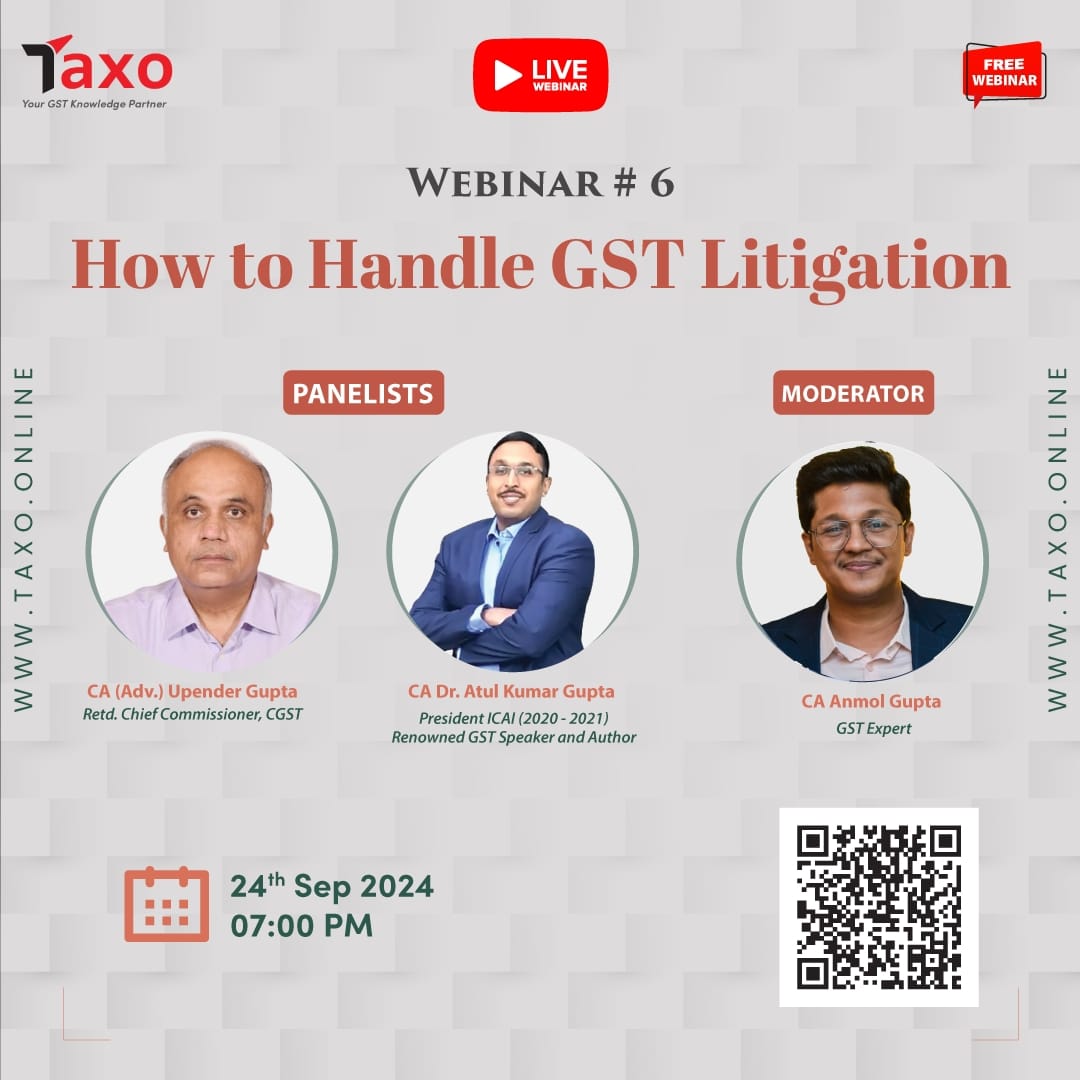GST rate structure has undergone many changes since the introduction of GST in India.
In the 45th meeting of the GST Council held on September 17, 2021, the Council constituted a Group of Ministers (GoM) Committee to examine matters related to rationalisation of GST rates.
The objective of the group is to simplify the rate structure of GST to reduce classification related disputes and enhance GST revenues. The specific objectives of the GoM on Rate Rationalization are the following: – review the exempted supply of goods and services under GST with an objective to expand the tax base as well as elimination of breaking of ITC chain, review the current tax rates of GST and recommend changes to generate required revenue, review the current rate structure of GST and recommend rationalization measures (including merger of tax slabs for simplification) and review the instances of inverted duty structure and recommend suitable rates to eliminate the same.
GST rate structure has undergone many changes since the introduction of GST in India. Revenue mobilization from the GST is falling short of targets and it is attributable to reduction of tax rates as well as lack of tax compliance. This is hurting tax revenue of the Union government as well as States. Like every tax reform, it was also envisaged that GST will be revenue-neutral – that means expected revenue from GST will match the revenue from taxes that is subsumed into GST.
Media reports have indicated that the effective tax rate under GST gone down from the original revenue-neutral rate of 15- 15.5% (as estimated in December 2015 by the then Chief Economic Adviser of Ministry of Finance, Government of India) to 11.6 per cent during July-September 2019 (as reported by the Reserve Bank of India in State Finances a Study of Budgets of 2019-20) on account of multiple rate cuts since introduction of GST in July 2017. It is expected that recommendations of the GoM on rate rationalization will correct this gap through rate changes in several product categories.
A multiple rate GST is politically more acceptable than a single rate GST as it has the potential to moderate the regressivity of GST. Taxing ‘sin’ goods (demerit/ luxury goods) at a higher rate often create fiscal space in favor of lowering standard rate(s). Taxing semi-processed or unprocessed foods and basic necessities at lower than standard rate often finds support from various quarters. On the other hand taxing high value low volume goods like precious stones, gems and jewellery at a higher rate may encourage unaccounted (undisclosed) transactions and therefore revenue leakages. Therefore, often these items attract special rates. Though, there is no consensus on what will be the optimal number of tax rates, it is desirable that it should be as minimum as possible.
In the present structure of GST, there are seven different GST rates apart from ‘zero’ (or nil rate). Two special rates – diamonds and precious (semi-precious) stones attract GST rate of 0.25% and gems and jewellery attract 3% GST rate. 0.1% GST rate is applicable for the supply of goods to merchant exporters. There are three standard GST rates – 5%, 12% and 18% and one de-merit rate of 28%.
A recent study of NIPFP on “Revenue Implications of GST Rates Restructuring in India: An Analysis” assesses the revenue implications of restructuring GST rates. The study builds six alternative scenarios based on various assumptions about the tax rate-wise distribution of taxable value and tax liabilities. It estimates that if the GST rate structure prevailing at the time of GST introduction is restored again in 2020-21, it may generate additional annual GST revenue of Rs. 124,904 crore. However, the revenue gain due to reinstating original GST rate structure is indicative and actual revenue gain may differ depending on ITC utilization pattern across tax rates (as well as tax payers), change in the tax compliance behavior and impacts on consumption pattern and associated changes in the output or taxable value etc.
Following the recommendation of the Fifteenth Finance Commission, the study explores the possibility of rationalisation of GST rate structure by merging the rates of 12% and 18%. The study finds that merging 12% and 18% tax rates into any tax rate lower than 18% may result in revenue loss. Since 18% tax rate holds two-fifth (41%) share in total taxable value (or taxable turnover) vis-à-vis 12.3% by 12 per cent tax rate, if the merged tax base attract 15% tax, there will be revenue loss.
To compensate the revenue loss, if the GST council considers increasing the highest tax rate (i.e., 28% at present), the highest tax rate needs to be increased to 37.55% (or approximately 38%). Alternatively, if the council considers increasing 5% tax rate, it needs to be increased to 8.81% (or approximately 9%). Alternatively, the council may consider three rate structure of GST by adopting 8%, 15% and 30% and it may help to achieve revenue neutrality. In all possibility it is likely that special rates will continue as prevalent at present. Sequencing the transition to new GST rate structure will be important to minimize the costs associated with tax compliance, tax administration and economic distortions. Consultations of stakeholders would be another important aspect before introducing new GST rate structure.
Restructuring of GST rates may be an idea whose time has come to help improve revenue mobilization. Estimation of revenue-neutral rates (RNRs) cannot be a onetime event, especially when the rate structure is undergoing changes so as the tax compliance, processes and procedures. Therefore, it is desirable that estimation of RNRs may be taken up by the GST council every regular interval, given the revenue needs of the governments. Given data limitations, these results are indicative. However, the methodology developed in the NIPFP paper may help any future research on the restructuring of GST rates
Sacchidananda Mukherjee is a guest contributor. Views expressed are personal.
SOURCE: ETNOWNEWS.COM
https://www.timesnownews.com/business-economy/economy/article/restructuring-gst-rates-available-options-for-the-gst-council/837915


